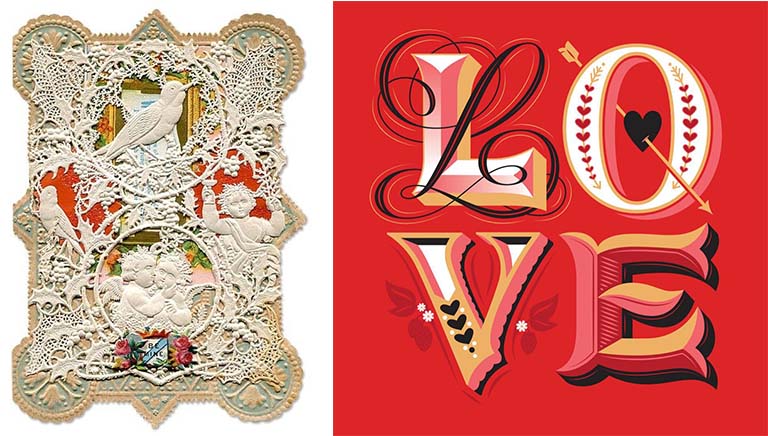Graphic Symbols of Valentine’s Day

Love is in the air, and no one is more enthralled with Valentine’s Day than florists, chocolatiers, and greeting card vendors. Consider these Valentine’s Day statistics for the U.S. alone: 110 million roses are sold February 14, 58 billion pounds of chocolates, and 145 million Valentine’s Day cards. Named for St. Valentine who died on February 14 after being tortured and beheaded by a Roman Emperor, Valentine’s Day, in the romantic sense that as we think of it today, did not catch on until the Victorian era and owes much of its popular success to rapid advances in printing, paper and mass production technologies. Over the ages, Valentine’s Day evolved its own romantic ideographs – the color red, stylized heart shape, Cupid shooting arrows dipped in desire and erotic love, birds chirping to attract a mate, and typographic flourishes bursting with rapture. The Victorian card, on the left, is overlaid with a delicate doily that reveals embossed, die-cut printed images on the paper beneath. The contemporary card, on the right, designed by lettering artist Jessica Hische, expresses the exuberant complexity of love by the way the letterforms are drawn.
Happy Valentine’s Day.




